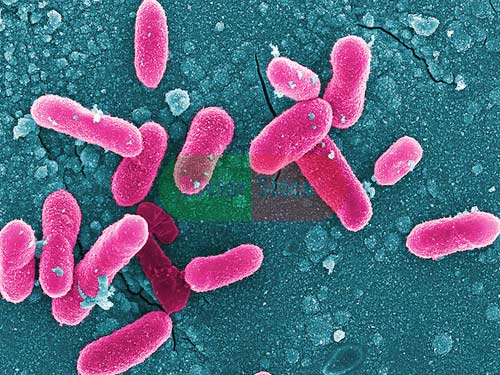Typhoid is basically a type of infection leading to acute illness with fever, which is caused by a bacteria, named Salmonella typhimurium (S. typhi). This bacterium thrives in the bloodstream and intestines of humans, spreading amongst individuals while one comes in direct contact with the feces of the person who is infected. Animals do not carry from this disease and it occurs only in humans. If typhoid is left untreated, one in four cases end in death.

The bacteria of typhoid enters through mouth and remains in the intestine for around 1 to 3 weeks. Thereafter, it makes its way through the walls of the intestine and enters into the bloodstream from where it reaches the organs and the tissues. The bacteria lives in the cells of the human body and the immune system cannot fight it back.
Diagnosis of typhoid is done when the presence of S. typhi is seen in samples of stool, blood, bone marrow, and urine.
Symptoms of typhoid
The symptoms of typhoid become noticeable generally in 6-30 days, after the bacteria is exposed. High fever and rash are generally the prime symptoms. Fever at some occasions can go as high as 104 degrees Fahrenheit. The rashes are rose-colored and mainly appear on the abdomen and neck. The other symptoms include
- Weakness
- Constipation or diarrhea
- Abdominal pain
- Vomiting
- Headaches
- Poor appetite
- General aches and pains in the body
- Fatigue
- Intestinal bleeding or perforation (after 2 to 3 weeks)
- Chest congestion (in some patients)
Causes of Typhoid
Typhoid is contracted mainly by eating or drinking contaminated water or food. People who are carrying the bacteria can even contaminate the surroundings through their stool that is a strong carrier of this bacteria. This bacteria can stay for weeks in dried sewage or water.
After suffering from severe illness, around 3 to 5 percent of people becomes carriers of the bacteria of this bacteria. There are others too in whom the illness is mild and thus is not recognized.
Treatment of Typhoid
The prime treatment of typhoid is antibiotics that kills the Salmonella bacteria. Before the use of the antibiotics, the fatality rate in the case of typhoid fever was 20 percent, which occurred due to intestinal perforation, infection, intestinal bleeding and pneumonia. Today, mortality rate has come down to 1 to 2 percent due to antibiotics and patient care. Because of antibiotic therapy and patient care, improvement can be seen in as early as 2 days and recovery starts in 7 to 10 days. It is always sensible to consume clean water and eat fresh fruit.
Further Read: Chikungunya Virus: Symptoms, Diagnosis and Treatment
